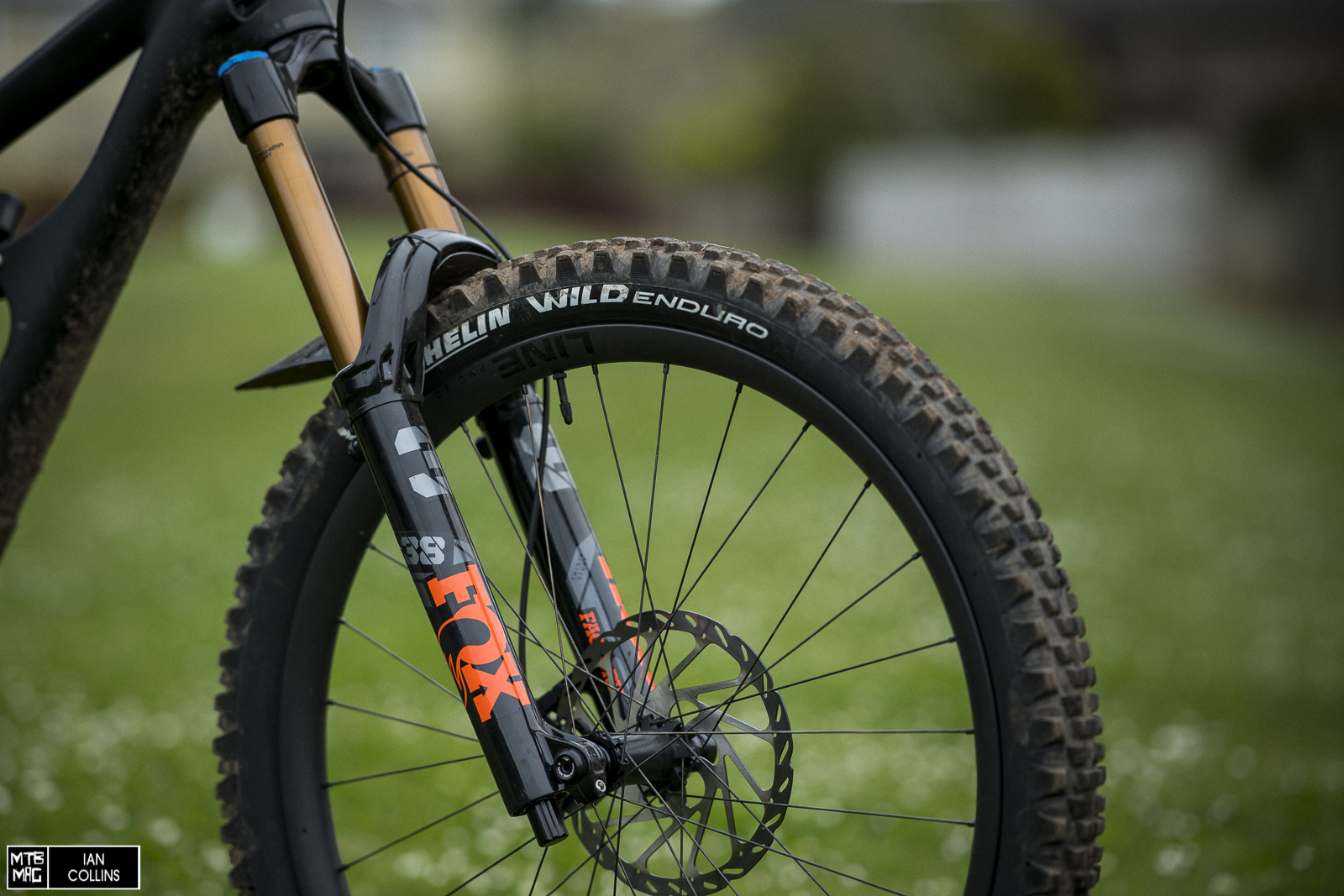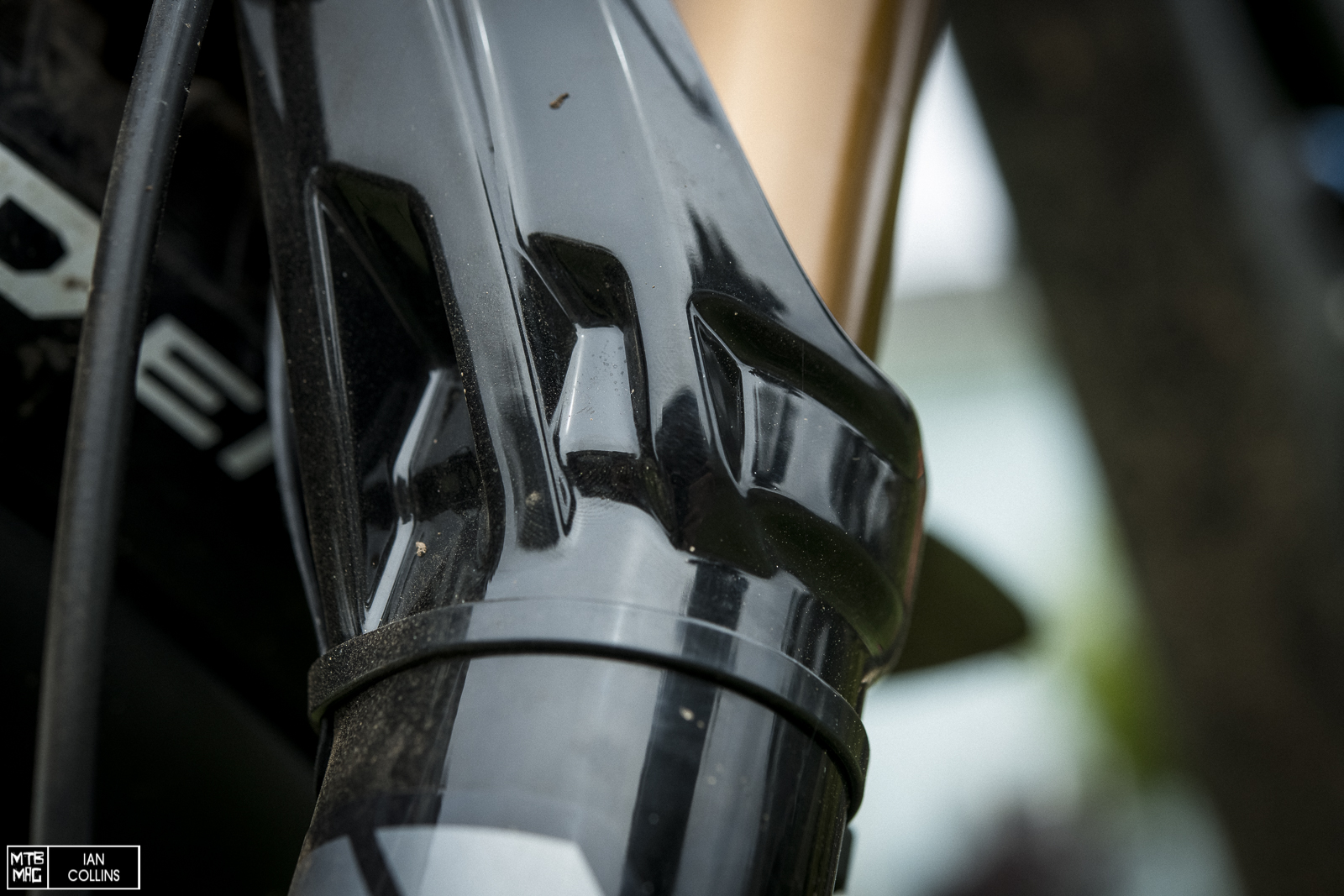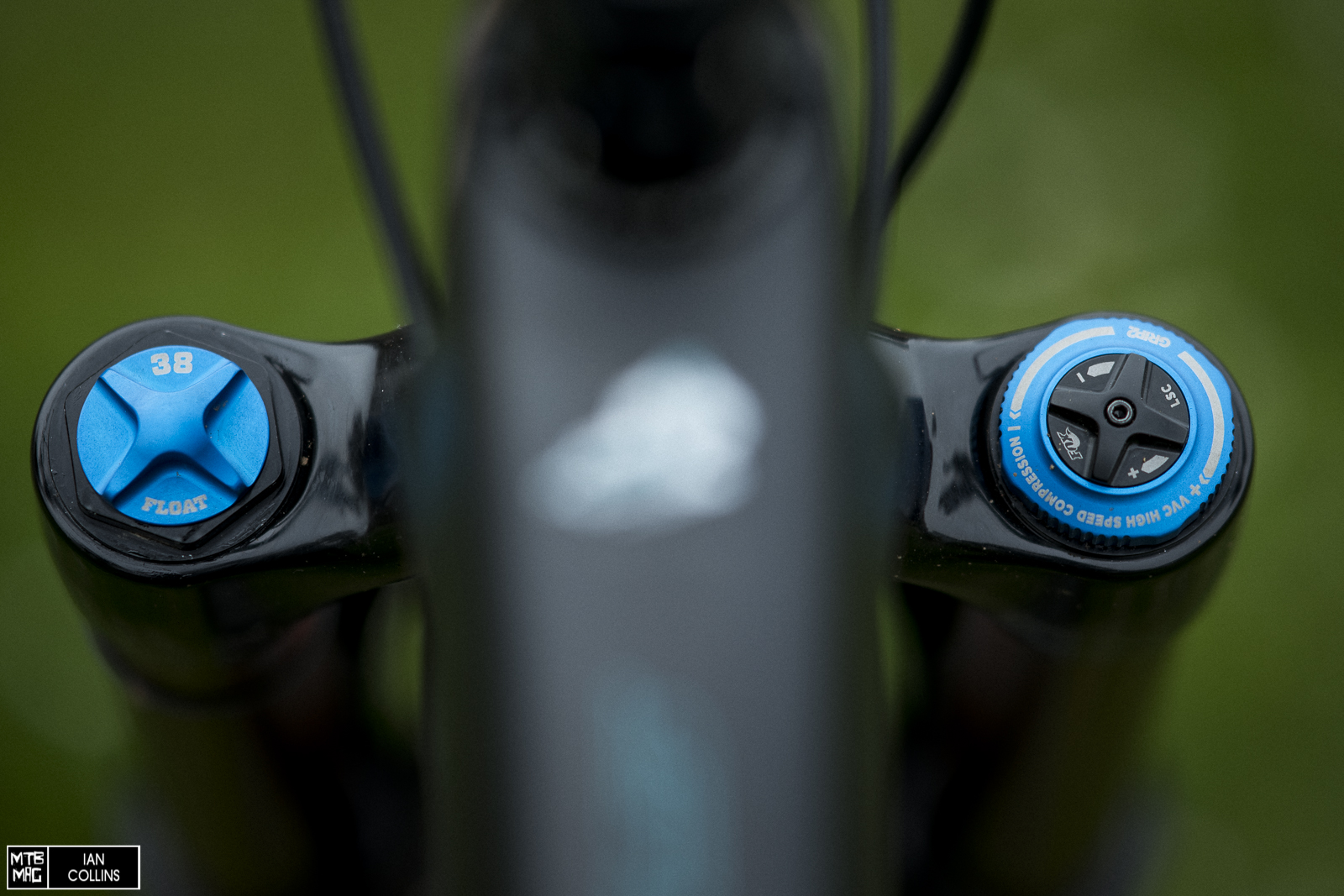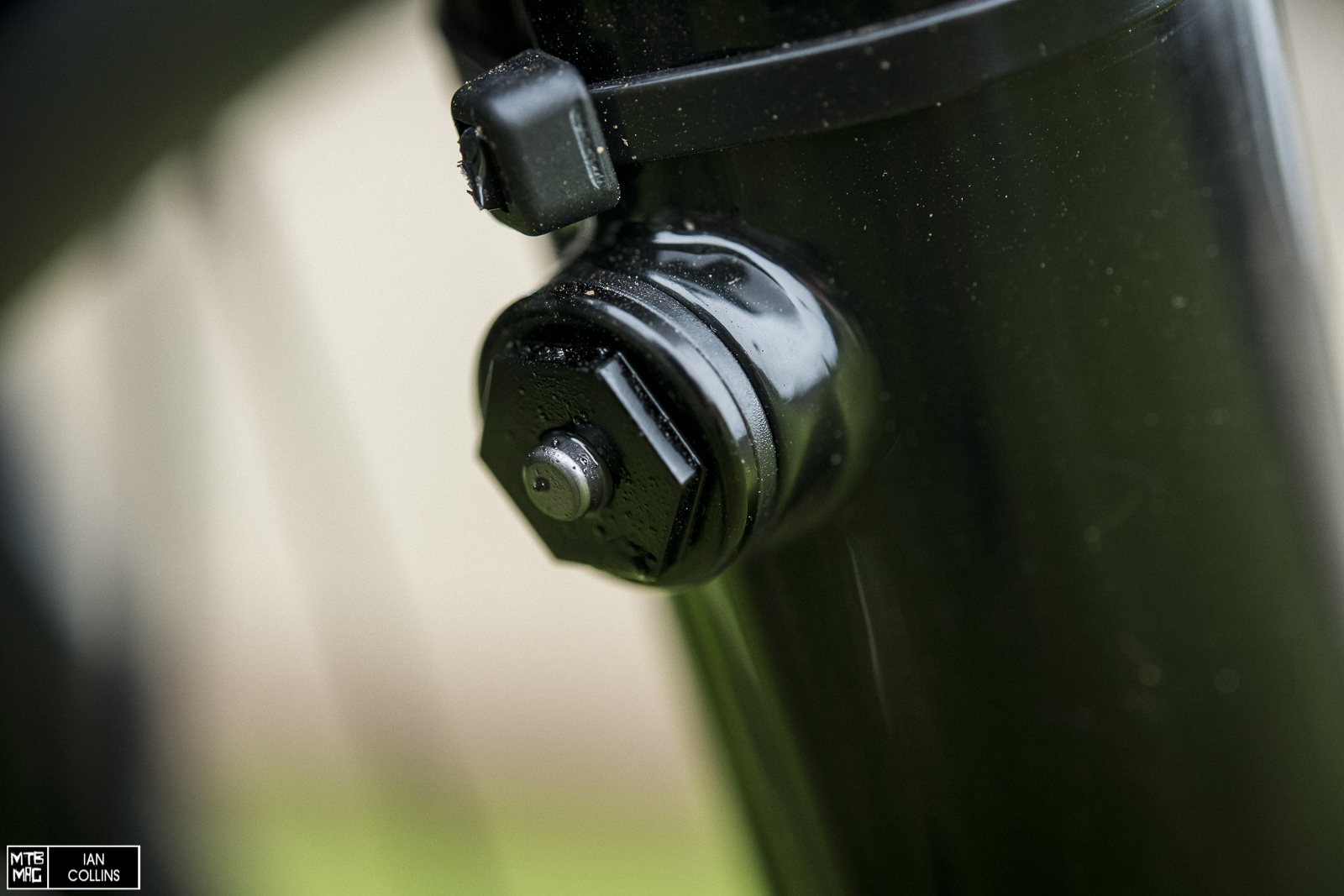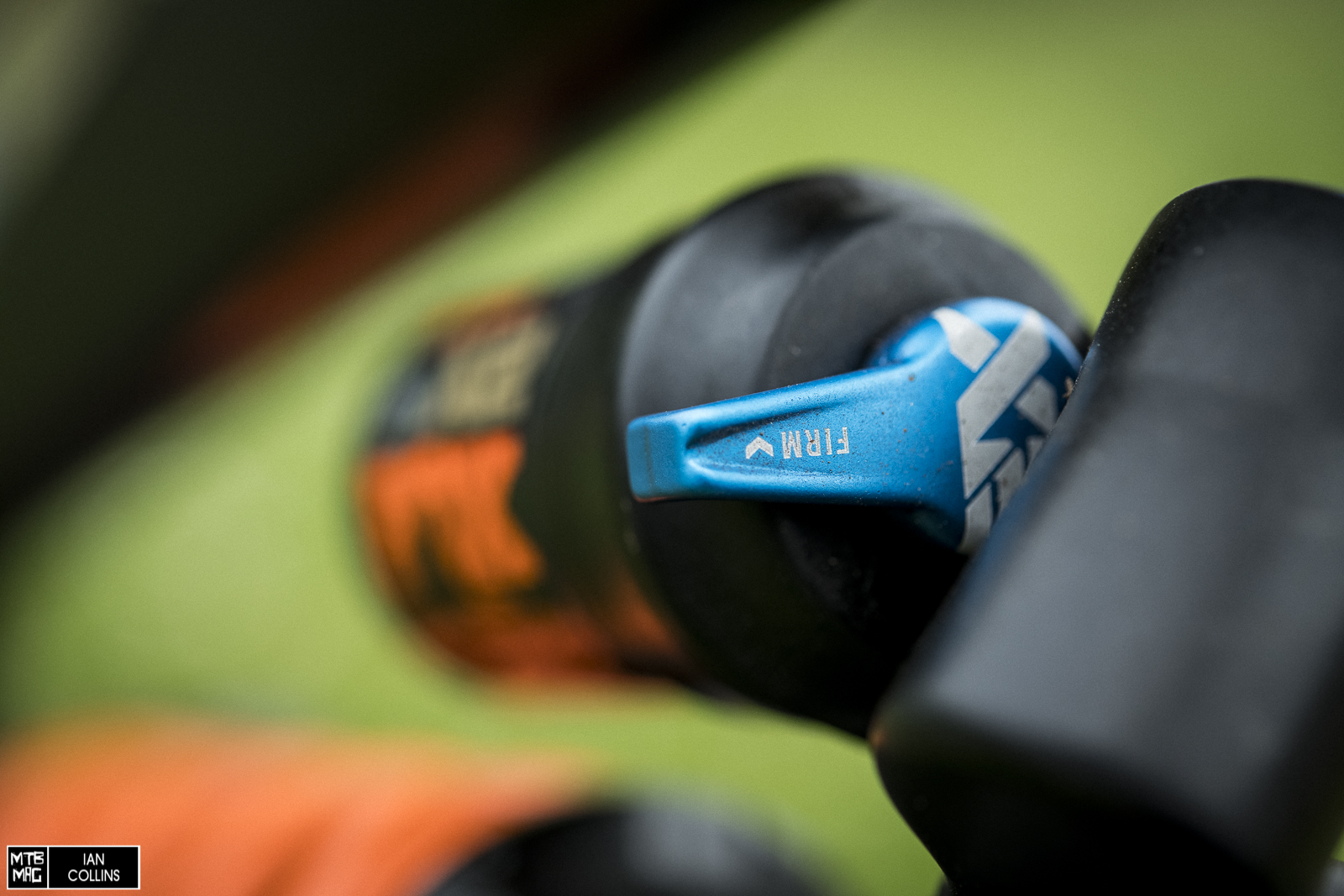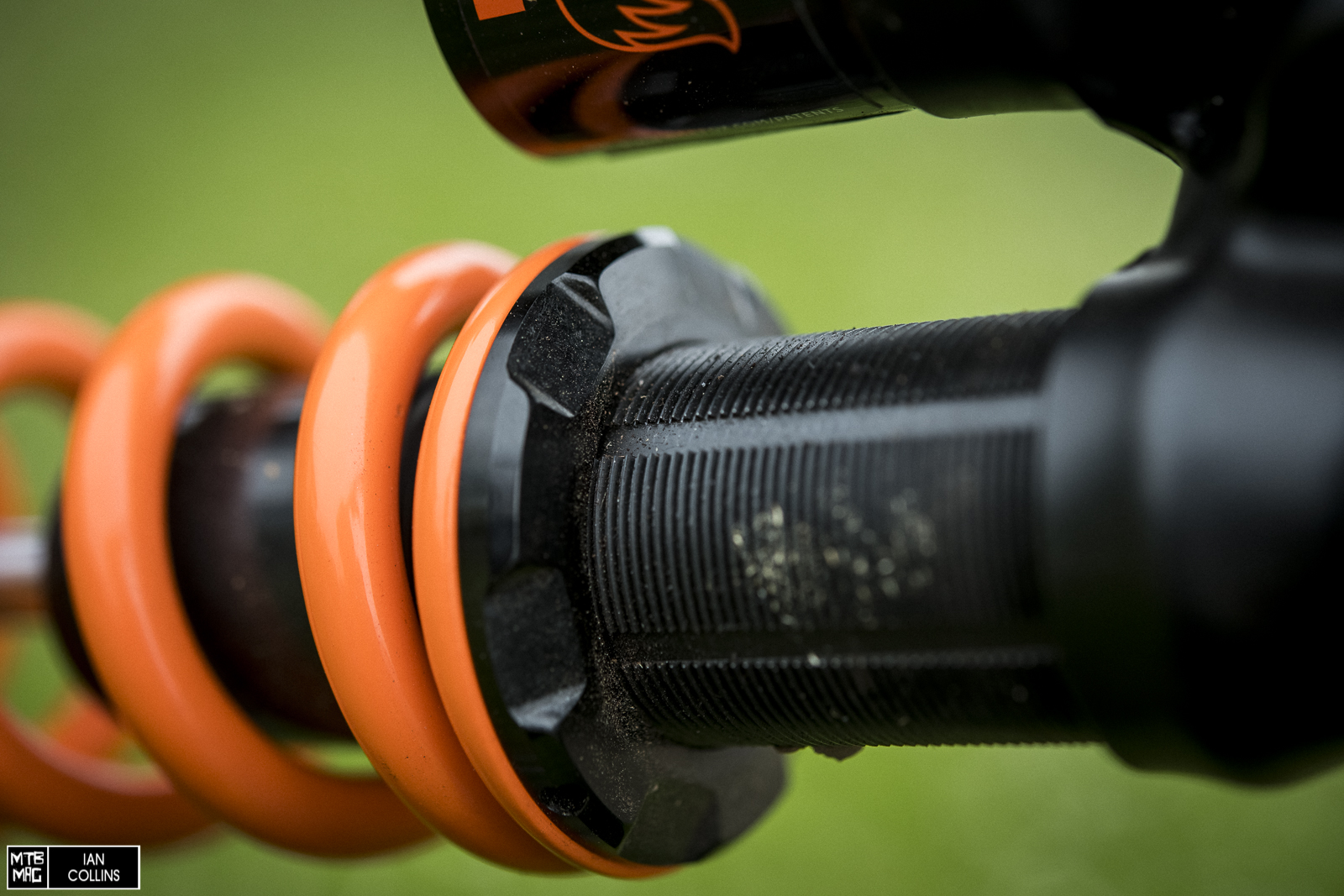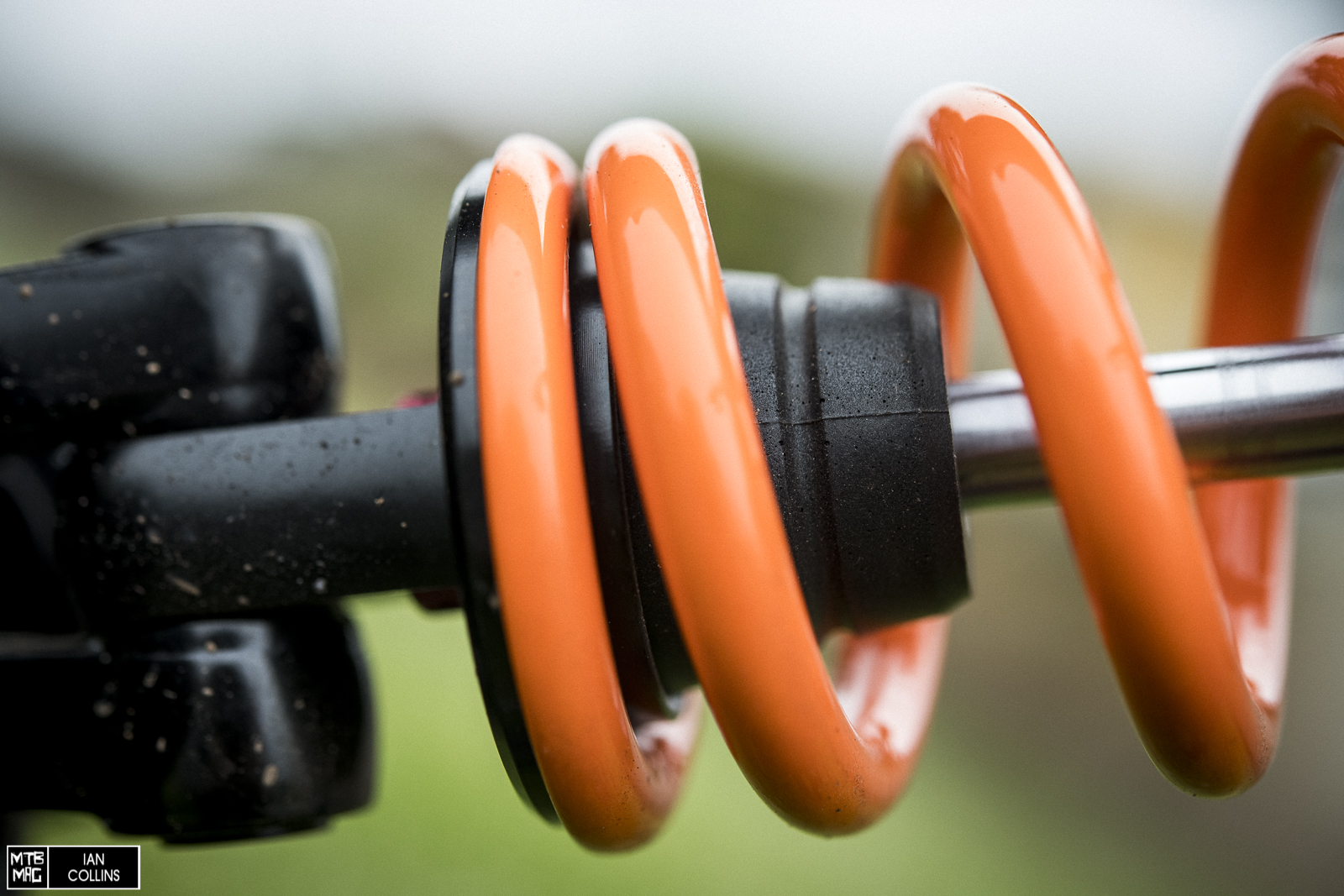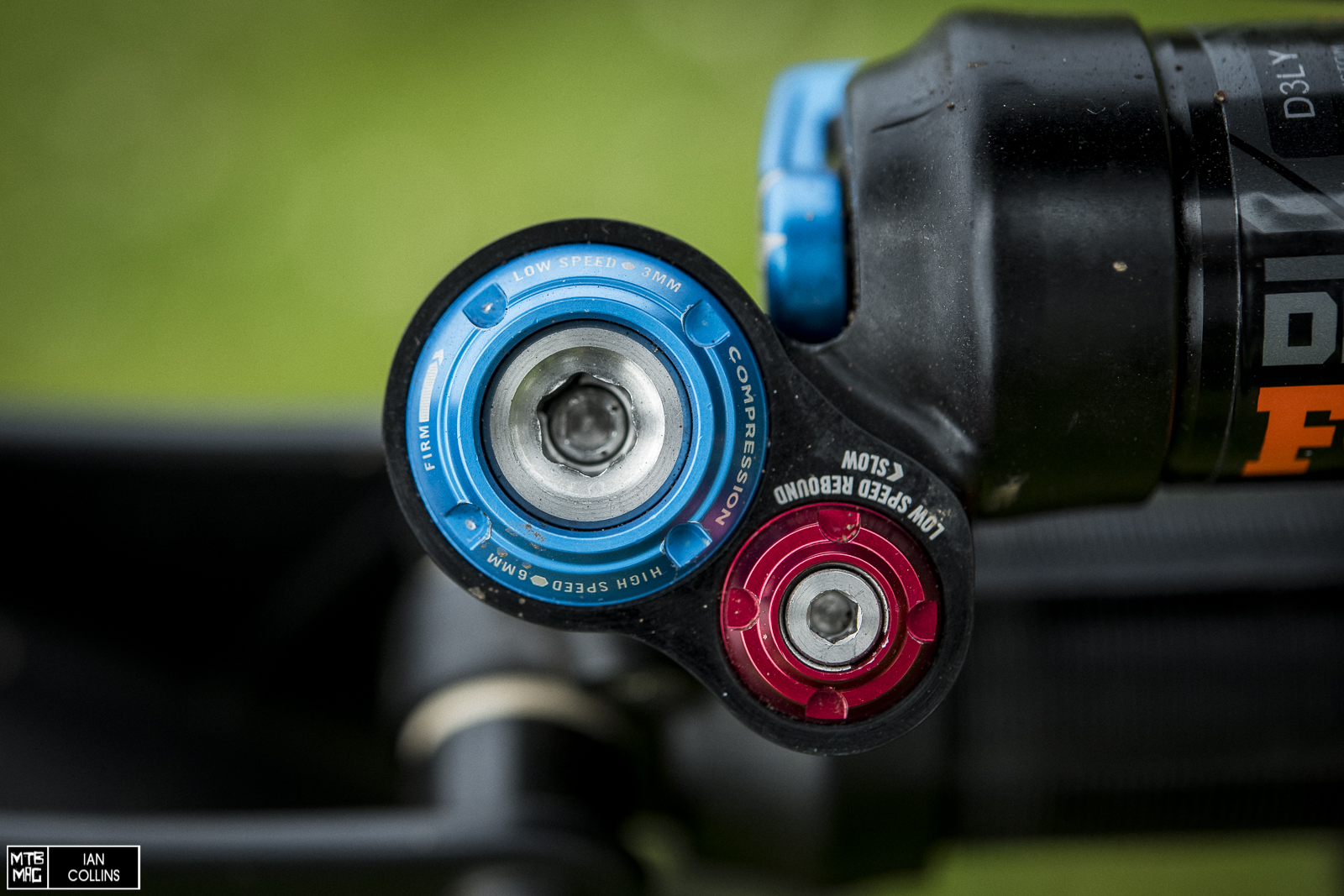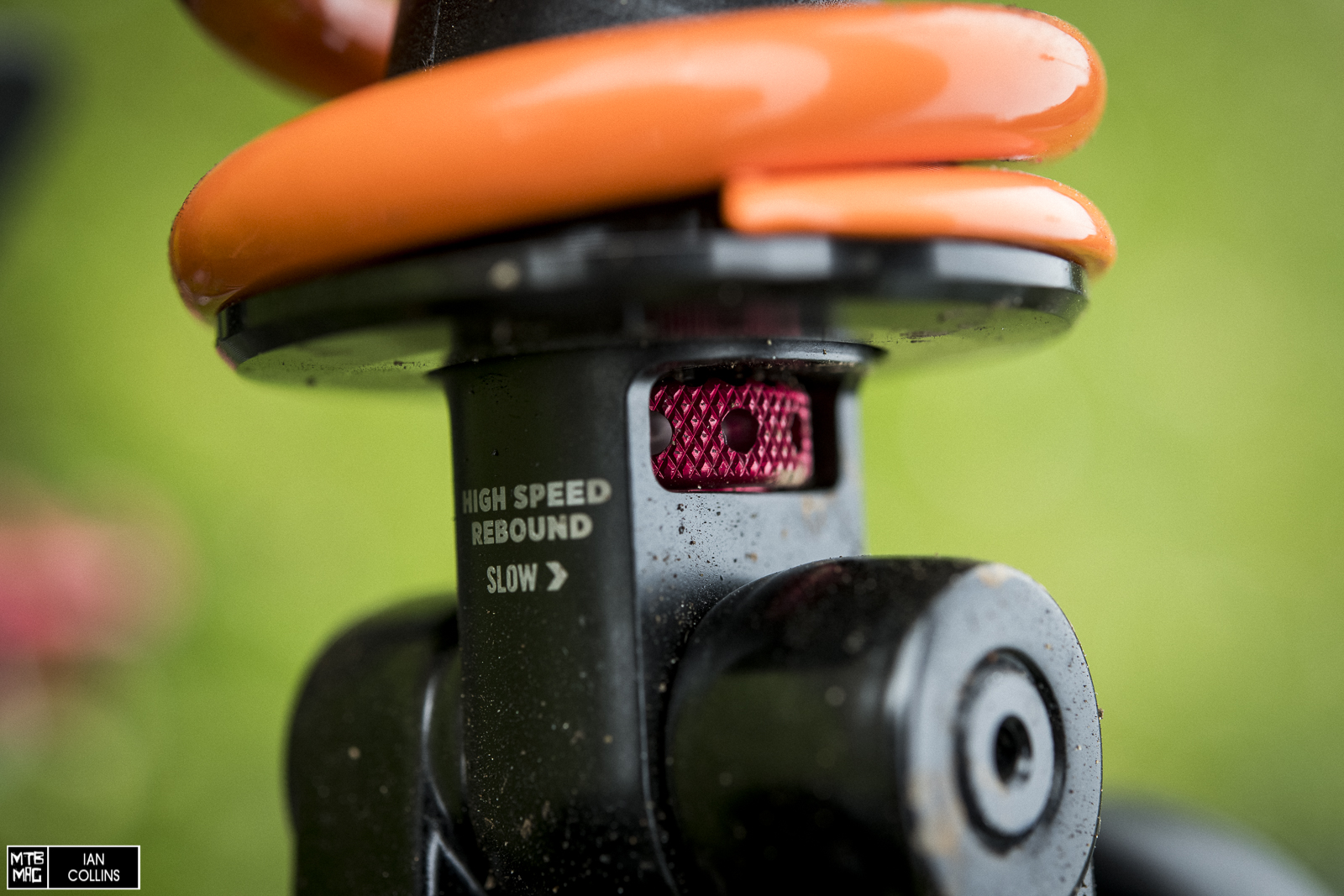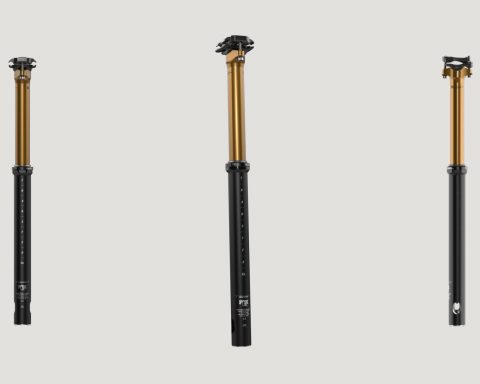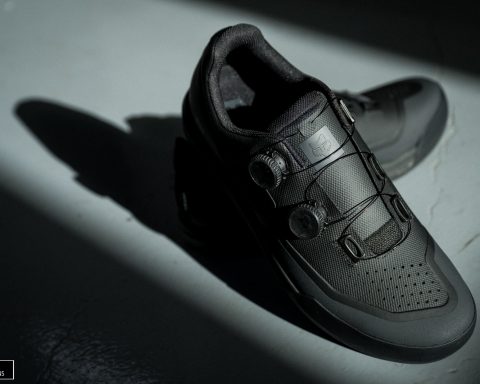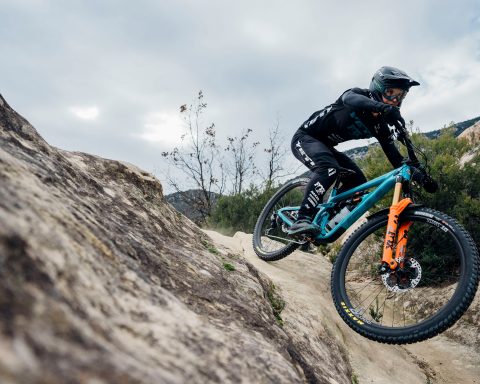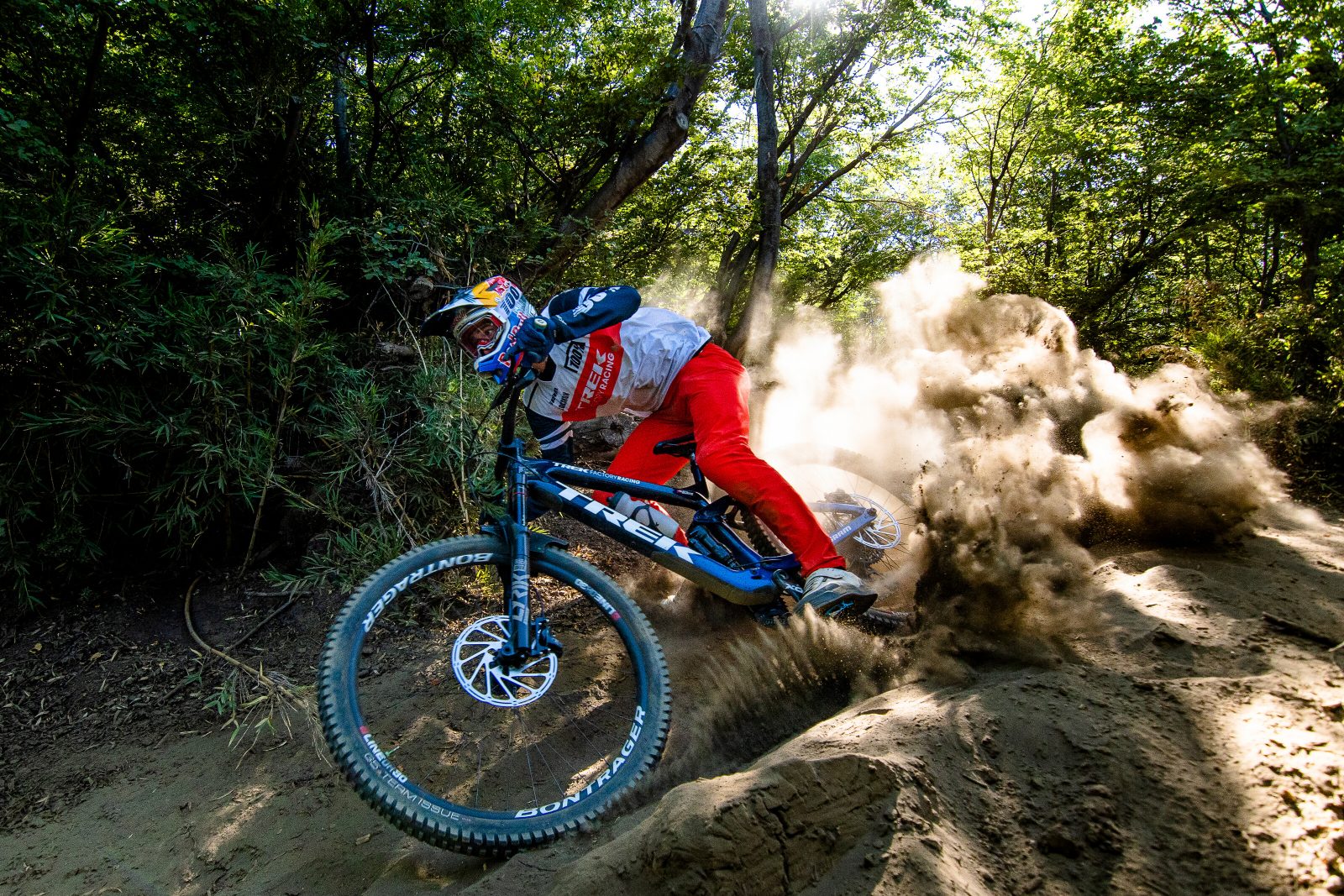Fox recently unveiled most of their 2021 lineup today, and in doing so finally made public the much anticipated new addition to their fork lineup – the 38. The fork wasn’t exactly kept secret as it was openly being piloted, tested and podium’d by Fox athletes toward the end of the 2020 EWS season. Similarly, the all new DHX2 was being tested on the race circuit by World Cup DH athletes last year as well. While I am testing the coil sprung DHX2, it’s worth noting that there is also an all new Float X2, which is air sprung and shares the same hydraulic architecture as its coil mate, shown here. In any case, Fox came through with a fork and shock to outfit my Yeti SB-165 long term test rig with a couple of weeks ago – that has given me some time to put my first impressions to digital paper. Before you read on, it might be worth taking a look at this article regarding the new 2021 lineup from Fox. In it you’ll find a more detailed breakdown of all of the new features. After a quick overview in the beginning, the main focus of this article will be based around initial riding impressions of the 38 fork and the DHX2 rear shock …
Details
38 Fork
- Elliptical steerer tube maximizing stiffness to weight
- Lower leg bleeders
- Air / oil channels
- Floating axle
- Arch shape offers improved head tube clearance with shorter rakes
- Matching 8-click HSC and HSR adjustment on GRIP2 forks and X2 shocks
- Damper option (s): GRIP2 with VVC FIT4, GRIP
- Updated EVOL air spring
- Travel option (s): 160mm-180mm
- 31% transverse shear stiffer, 17% fore / aft stiffer and 38% torsionally stiffer than 36
- 27.5 “& 29”
- 37mm, 44mm, and 51mm offsets
- 58mm crown diameter to match modern frame shape profiles
- Opional mud guard
- Available in Factory, Performance Elite, Performance, and E-Bike models
- Starting weight: 2180 g (our 27.5 “, 180mm travel 37mm offset for weighed in at 5.00 lbs with Kabolt axle and 7.5” steerer)
- MSRP USD $ 949 – $ 1199 / CDN $ 1249 – $ 1579 / EUR € 1259 – € 1589
While the 2021 release brings about a slew of new features both internally and externally across most of the line, the 38 is the big story here. While many of us thought that the 36 was plenty beefy, Fox knew there was room for more meat and bumped the stanchion size up by 2mm. This obviously comes at a relative weight penalty, but for what it’s worth, the new fork is lighter than the price: performance king that it replaced on my Yeti. That fork of course is the Marzocchi Z1 Coil.
Through painstaking FEA and computer modeling, Fox arrived at a radically different lower leg assembly. The trusses above which support the massive new arch are a great visual example of how they maximized weight reduction while still working within the confines of such a large structure.
Up close and personal, the fork is quite massive. With how hard EWS racers are pushing long travel 29 “wheeled bikes these days, there was definitely room in the market for the 38. It will also have a big appeal with the bike park crowd and perhaps even freeriders as well.
While reception of the new arch’s aesthetics has been mixed, you may as well embrace it. 36, 38 & 40 all take on this new crown shape. Personally, I like the look and got used to it rather quickly.
While the 2020 36 already had a Grip2 damper with Variable Valve Control (VVC), it had solely it in the high speed rebound circuit. For 2021, the 36, 38 and 40 see VVC in both high speed rebound and high speed compression. You can get an excellent understanding of what makes VVC unique at the 1:32 mark in this video, where it is explained in a much better fashion than I can manage.
Air bleed ports help release built up pressure and adjust for varying altitudes while traveling. Tapering down and away from the bleed port are the new “air channels”. These help increase the air volume trapped in the lower legs, which makes it easier to achieve full travel, while also ensuring that lubricating oil can do its thing and keep hitting the seals and bushings, thus enscouraging smoother action.
DHX2 Coil Rear Shock
- New chassis, damper, high flow piston and progressive MCU bottom-out bumper
- Matching 8-click HSC and HSR adjustment on Grip2 forks and X2 shocks
- New HSR with VVC (Variable Valve Control)
- Independent firm mode circuit – firmer lockout than previous DHX2
- Ultra-low friction, highly durable damper shaft finish
- Improved bearing ratio for metric sizes
- Reduced length reservoir for better fit on more frames
- Steel outer body and finned inner body for improved structural rigidity and reduced hysteresis
- New detents on spring collar to prevent loosening under light preload conditions
- MSRP: USD $ 619- $ 649 / CDN $ 759- $ 859 / EUR € 819- € 859
- * Spring sold separately
- Weight varies with size
- Our 230mm X 65mm standard eyelet shock weighs 851 grams with a # 450 FOX SLS spring and no hardware
Here it is – although this new 2021 DHX2 may look similar to the current DHX2 upon first glance, rest assured – it’s a completely different shock and doesn’t share a single part with the last design. A quick note on the reservoir shape is that it has been shortened to better clear more frames. To make up for the precious lost volume, the reservoir simply got wider in shape.
The new lockout lever is completely independent of the damping circuitry, which allows for a firmer lockout and therefore more efficient climbing.
A really neat feature on the new DHX2 are detents in the spring collar which not only make “counting clicksturns “easier to keep track of, it also prevents the spring collar from moving while riding with very light preload on the spring itself. An even bigger story is not so apparent … The shock body itself is now steel, as opposed to aluminum . while Fox incurred a slight weight penalty for this, it boosted Increased strength and rigidity while improving Also heat management.
Another big story is the MCU bottom out bumper. The last version was embarrassingly insufficient, but this one has been wholly fortified and managed the worst of bottom outs in a superior fashion. Fox also has ditched the ti-ni shaft finish and replaced it with hardened chrome finish, just like you’d see in the moto / auto world.
This might look familiar, yet somehow different. The external damping adjustments still require 3mm and 6mm allen keys, but s omething seems to be missing compared to the last model … High speed rebound damping?
The high speed rebound damping gets upgraded to Fox’s Variable Valve control, or VVC. In doing so, it was moved down to the lower shock eyelet and is now adjustable by hand. It’s can be a bit hard to reach regardless of which bike you mount it to, so Fox was wise to zip a hand full of holes in the knurled knob. Those holes make it easy to poke a 2mm allen key in and count your clicks while tuning.
Setup
I was fortunate enough to get a good baseline starting point from Fox’s race tech guru Jordi Cortes, who lives in town here in the Santa Cruz area and knowing my weight, ability and bike specifics, he pretty much hit the nail on the head, so that saved me some time and allowed me to cram more ride time in. I found myself with 100 PSI in the fork and have been bouncing back and forth between 1 and 2 volume reducers, finding both options quite good. Interestingly Jordi had me start with the high speed compression all the way open on both the fork and shock. While I found this to be just fine, I was curious about the range and found that I could still add a few clicks on both ends before things started to get too harsh.Out back I stuck with a 450 pound spring with very little preload.
Current settings:
Fork – Spring : 100PSI / 2 volume reducers. Compression: -7 HSC / -10 LSC. Rebound: -7 HSR / -6 LSR
Shock – # 450 spring. Compression: -8 HSC / -10 LSC. Rebound: -4 HSR / -10 LSR
On the trail
38 – While you might think the increased stiffness would be the first thing to make itself obvious as soon as you hopped on a bike with a 38 fork, that wasn’t exactly the case. Cruising my way up a climb at the beginning of my first ride, the stiffness really didn’t jump out and scream at me. Once I got into the meat of the first descent, I started to notice that the fork just had a stout disposition, but it wasn’t deflecting by any means. The point being, I don’t think this fork is going to feel like overkill, especially within the confines of its intended usage. Anyhow, pushing harder and faster revealed the fork’s confident stature, particularly during those “oh shit” moments and under late braking in haggard blown out turns.The previous statement is mainly aimed at and relevant to the structural side of things, but it also applies to the hydraulic side of things as well. In any case, while the 38 may look like a tank, it certainly does not bog down your front end, nor does it make it excessively nervous due to an overly rigid chassis. Rather, it handles like a champ on the rowdiest of sections that you’d want to find yourself riding a single crown on.
In terms of the 38’s inner workings, I was very impressed right away as well. Starting with the air spring, the main change is in the added air volume trapped in the lower legs due to the “air channels” on the back of the lower leg casting. Working with less volume in the past meant higher pressures and more ramp up, so often times riders could not make full use of the travel on their 36. Easing into things on a broad variety of trails, it took a few runs before I began to consistently find bottom out with a single volume reducer.With that setup I found a really good overall rate that seemed to flatten the curve a bit compared to a 2020 36. After getting up to speed I made the switch to 2 volume reducers and found that I could honestly go either way … On trails that are a bit more haggard and jank, I’ll likely go the more linear route with 1 reducer, and on bike park style trails and the steep loamers, I’ll stick with 2 reducers instead. In any case, I found that there is a bit more usable adjustment to fine tune the air spring, and getting full travel occurs more frequently, but in a good way.
On the damping side of things I would say that this fork felt damn good overall on most gravity oriented trails and in the fashion you’d expect. Afterall, the Grip 2 damper in the 36 was already lauded as a rather incredible system. But where the 38 really shined was when things got a bit scary and hectic. At one point, having overshot a ragged natural stepdown, upon landing in a sizeable rutted bombhole I got a bit panicked as I was touching down, but was floored by how well the fork was able to take it and just shake it right off without flinching . For what it’s worth, I found the 38’s composure during this event to also be impressive from a structural standpoint.Anyhow, coming off of a coil fork, I assumed I’d notice a big loss of traction, but that was not the case. One of my first comments to a contact at Fox was that I felt like my 27.5 “bike had big wheel traction now. As far as mid stroke support is concerned, I liked what I felt and think its due in part to the nicely tuned air spring curve as well as the mid valve in the Grip 2 damper. In any case, the 38 sat up in its travel nicely, even in this 180mm long travel version, with just one volume reducer.
DHX2 – Before even hitting the trails, I was very happy with the increased support that the rear shock offered compared to its last iteration, which came stock on my bike, thus providing a direct comparison between old and new. The increased progression was far improved beyond simply what the bottom out bumper provides alone. Rather the shock ramped nicely throughout the stroke. To be completely honest, even on some intentionally harsh flat landings I never even noticed the transition to the bumper, much less full bottom out itself. Anyhow, m ost good rides start with a climb, and from the beginning, I did notice that the new lockout lever was a bit firmer, which helps on such a big bike.Generally speaking it still provided ample give and traction on trail when needed, which was ideal. As far as everything else goes, so far I have nothing but good things to say about the new DHX2. For what it’s worth, its predecessor was my least favorite of the current crop of rear shocks. I found that the rudimentary, $ 299 Marzocchi Bomber CR (a ten year old design) outperformed it on my Yeti. In any case, I would say the big story is that the shock is much more supportive while still being absolutely glued to the ground. It takes the back to back hits without losing composure, while also managing to feel a bit livelier – simply put, you don’t feel like you get swallowed by the travel.Also crucial to reiterate, is that the way it manages big hits is also superior to the old DHX2 as well. I’m curious to see how it would manage on a bike with kinematics that lean a bit more in the linear direction, but on the “just right” 27% progression of the Yeti, it indeed feel “just right”. Based on how supportive this new version of the shock is, I have a feeling it will be much better suited to a broader range of rear suspension designs.
One new feature that is a bit harder to put to paper is the new steel shock body. While I’d be a lying fool if I claimed to notice a perceptible performance increase due to it, I don’t blame Fox for their methodology and I’m sure it could be a make or break aspect for someone like Greg Minnaar or Richie Rude. In any case, I really liked the detents in the spring collar – they’re simple and brilliant! More straight forward and effective than a grub screw, and way more satisfying. If I had one minor gripe in terms of functionality, it would be that it’s a bit difficult to reach the high speed rebound knob. Regardless, with the other 3 settings, if you’re tinkering then you’re pulling out a tool anyway, As far as tunability goes, I can ‘make any broad claims about how well this one shock can cover the whole spread of bikes on the market and still offer a usable range. My inclination is that it should work fairly well, unless you find yourself on the extreme end of a setup – say, being very light weight as a rider and on an ultra progressive bike. Or being quite heavy and on a super linear bike. With that in mind, Fox will have a tuning bank and has excellent customer support for such inquiries. There is also always the option of custom tuning via a third party.
Overall
Well, it would be very premature to make any long term assessments as I’ve only had this new suspension for a couple of weeks, but my initial impressions have left me extremely impressed so far. Both the 38 and the DHX2 are precisely what I want out of gravity oriented suspension. They are widely tunable, incredibly calm and composed, and were transformative in my bike’s handling. Personally, I think that while most riders would enjoy the 38 and the DHX2 on the right terrain, it will be those pushing hardest who will benefit from them most. We’ll keep you posted with our long term findings, but at the moment we have nothing but praise so far. All in all, the 38 is beastly but chiseled and refined, and the DHX2 is an absolutely enormous improvement over its predecessor.

